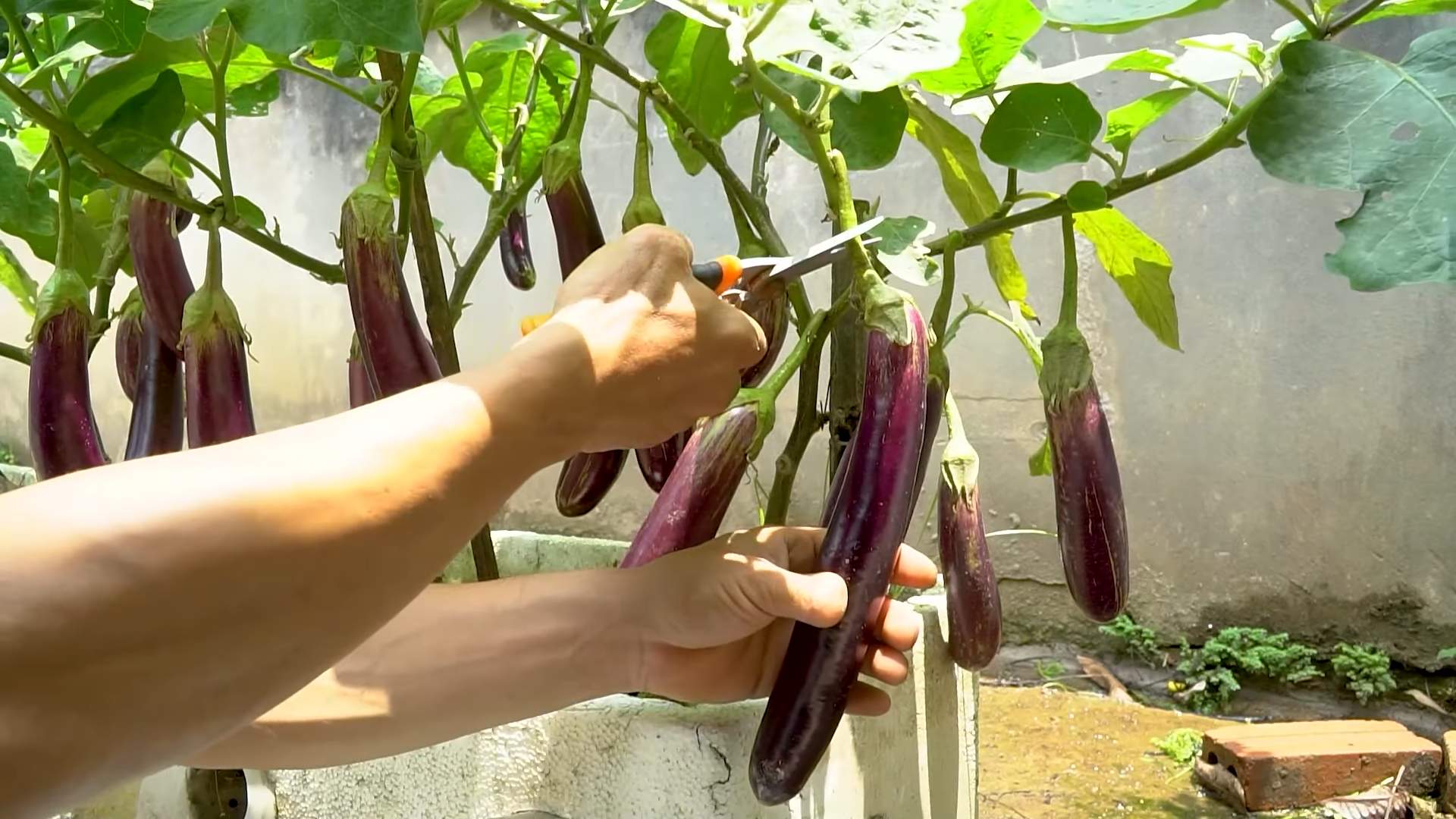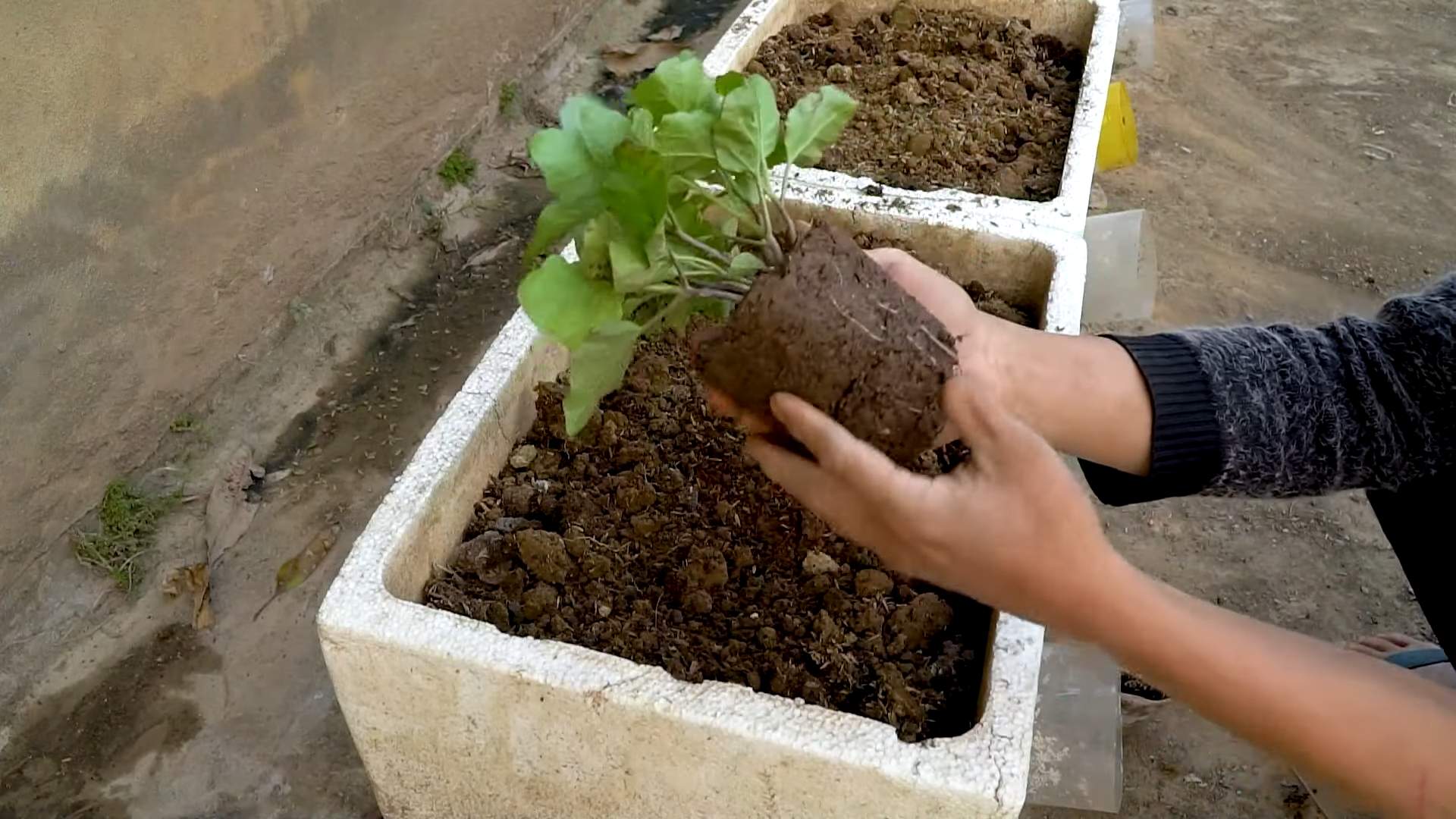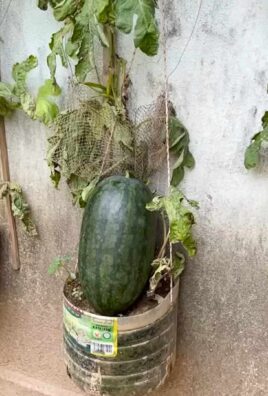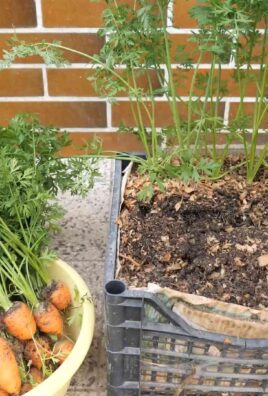Growing Eggplant at Home can seem daunting, but trust me, with a few simple tricks and a little DIY magic, you can harvest plump, glossy eggplants right from your own backyard! For centuries, eggplants have been a staple in cuisines around the world, from the Mediterranean’s moussaka to Asia’s flavorful curries. Their rich history speaks to their versatility and deliciousness, and now, you can bring that history to your own table.
Have you ever dreamed of serving up a dish featuring ingredients you nurtured from seed to plate? I know I have! That’s why I’m so excited to share these easy-to-follow DIY tips. Let’s face it, store-bought eggplants can sometimes be bland and expensive. But with these hacks, you’ll be enjoying the freshest, most flavorful eggplants imaginable. Plus, there’s nothing quite like the satisfaction of knowing you grew it yourself. So, if you’re ready to unlock the secrets to successfully growing eggplant at home, keep reading! I’m about to reveal some game-changing techniques that will have you harvesting a bumper crop in no time.

Growing Eggplant at Home: A Beginner’s Guide
Okay, so you want to grow eggplants? Awesome! I’m here to tell you it’s totally doable, even if you’re a newbie gardener. Eggplants can be a little finicky, but with the right approach, you’ll be harvesting beautiful, glossy fruits in no time. This guide will walk you through everything you need to know, from seed starting to pest control. Let’s get started!
Choosing Your Eggplant Variety
First things first, you need to decide what kind of eggplant you want to grow. There are so many cool varieties out there, beyond the standard large, purple ones you see in the grocery store. Consider these factors:
* Size: Do you want large eggplants for grilling, or smaller ones for stir-fries?
* Color: Purple is classic, but you can also find white, green, pink, and even striped eggplants!
* Shape: Round, oval, long, slender – the possibilities are endless.
* Days to Maturity: This is crucial, especially if you live in a cooler climate. Choose varieties with shorter maturity times (60-70 days) to ensure you get a harvest before the first frost.
* Disease Resistance: Look for varieties that are resistant to common eggplant diseases like Verticillium wilt and Fusarium wilt.
Some popular and reliable varieties include:
* Black Beauty: A classic, large, purple eggplant.
* Ichiban: A long, slender, Japanese eggplant.
* Fairy Tale: Small, striped eggplants that are perfect for containers.
* Rosa Bianca: A beautiful, round, lavender and white eggplant.
* Little Fingers: Produces clusters of small, finger-like eggplants.
Once you’ve chosen your variety, it’s time to get planting!
Starting Eggplant Seeds Indoors
Eggplants need a long growing season, so it’s best to start them indoors about 8-10 weeks before the last expected frost. Here’s how:
1. Gather Your Supplies:
* Seed starting trays or small pots
* Seed starting mix (a light, sterile mix is essential)
* Eggplant seeds
* Spray bottle
* Heat mat (optional, but helpful)
* Grow lights (essential if you don’t have a very sunny window)
* Waterproof marker and labels
2. Prepare Your Seed Starting Trays: Fill your seed starting trays or pots with seed starting mix. Gently tap the trays to settle the mix.
3. Sow the Seeds: Make a small indentation (about 1/4 inch deep) in the center of each cell or pot. Place 2-3 eggplant seeds in each indentation. Cover the seeds lightly with seed starting mix.
4. Water Gently: Use a spray bottle to gently moisten the soil. Avoid overwatering, as this can lead to damping off (a fungal disease that kills seedlings).
5. Provide Warmth and Light: Place the seed starting trays on a heat mat (if using) and under grow lights. Eggplant seeds need warmth to germinate (around 80-85°F). If you don’t have a heat mat, place the trays in a warm location. Keep the grow lights on for 14-16 hours per day.
6. Maintain Moisture: Keep the soil consistently moist, but not soggy. Check the soil daily and water as needed with a spray bottle.
7. Thin the Seedlings: Once the seedlings have emerged and have their first true leaves (the second set of leaves), thin them to one seedling per cell or pot. Choose the strongest, healthiest seedling and snip off the others at the soil line with scissors. Don’t pull them out, as this can disturb the roots of the remaining seedling.
8. Harden Off the Seedlings: About a week before you plan to transplant the seedlings outdoors, you need to “harden them off.” This process gradually acclimates the seedlings to outdoor conditions. Start by placing the seedlings outdoors in a sheltered location for a few hours each day, gradually increasing the amount of time they spend outdoors. Protect them from direct sunlight and strong winds.
Transplanting Eggplant Seedlings Outdoors
Once the danger of frost has passed and the soil has warmed up (ideally above 60°F), it’s time to transplant your eggplant seedlings outdoors.
1. Choose a Sunny Location: Eggplants need at least 6-8 hours of direct sunlight per day. Choose a location that is sheltered from strong winds.
2. Prepare the Soil: Eggplants prefer well-drained, fertile soil with a pH of 6.0-7.0. Amend the soil with compost or well-rotted manure to improve drainage and fertility.
3. Dig the Planting Holes: Dig holes that are slightly larger than the root balls of the seedlings. Space the holes about 18-24 inches apart.
4. Transplant the Seedlings: Gently remove the seedlings from their pots or trays. Loosen the roots slightly and place the seedlings in the planting holes. Make sure the top of the root ball is level with the surrounding soil.
5. Backfill the Holes: Fill the holes with soil and gently firm the soil around the seedlings.
6. Water Thoroughly: Water the seedlings thoroughly after transplanting.
7. Mulch: Apply a layer of mulch around the plants to help retain moisture, suppress weeds, and regulate soil temperature. Organic mulches like straw, wood chips, or shredded leaves are ideal.
8. Stake or Cage: Eggplants can get quite heavy with fruit, so it’s a good idea to stake or cage them to provide support. This will prevent the branches from breaking and keep the fruits off the ground.
Caring for Your Eggplant Plants
Once your eggplant plants are in the ground, here’s how to keep them happy and healthy:
* Watering: Water regularly, especially during hot, dry weather. Eggplants need consistent moisture to produce good fruit. Aim for about 1-2 inches of water per week. Water deeply at the base of the plants, avoiding wetting the foliage, which can encourage disease.
* Fertilizing: Eggplants are heavy feeders, so they need regular fertilization. Apply a balanced fertilizer (e.g., 10-10-10) every 2-3 weeks. You can also use a liquid fertilizer or compost tea.
* Weeding: Keep the area around the plants free of weeds. Weeds compete with eggplants for water and nutrients.
* Pruning: Pruning can help improve air circulation and encourage fruit production. Remove any suckers (small shoots that grow from the base of the plant) and any yellowing or diseased leaves. You can also pinch off the tips of the branches to encourage branching.
* Pollination: Eggplants are self-pollinating, but they benefit from insect pollination. Encourage pollinators to visit your garden by planting flowers that attract bees and butterflies. If you’re not seeing much insect activity, you can hand-pollinate the flowers by gently shaking the plants or using a small paintbrush to transfer pollen from one flower to another.
Dealing with Pests and Diseases
Eggplants are susceptible to a few common pests and diseases. Here’s how to deal with them:
* Flea Beetles: These tiny beetles can chew small holes in the leaves. Cover young plants with row covers to protect them. You can also use insecticidal soap or neem oil.
* Aphids: These small, sap-sucking insects can weaken plants. Spray them off with a strong stream of water or use insecticidal soap.
* Spider Mites: These tiny mites can cause the leaves to become stippled and yellow. Spray them off with a strong stream of water or use insecticidal soap.
* Tomato Hornworms: These large caterpillars can devour eggplant leaves. Handpick them off the plants and drop them into a bucket of soapy water.
* Verticillium Wilt and Fusarium Wilt: These fungal diseases can cause the plants to wilt and die. Choose disease-resistant varieties and practice crop rotation.
* Blossom-End Rot: This condition causes the bottom of the fruit to rot. It’s usually caused by calcium deficiency or inconsistent watering. Ensure consistent watering and amend the soil with calcium (e.g., bone meal or crushed eggshells).
Harvesting Your Eggplants
The moment you’ve been waiting for! Eggplants are usually ready to harvest about 60-80 days after transplanting, depending on the variety.
* Check for Ripeness: The skin should be glossy and firm, and the fruit should feel heavy for its size. Gently press the skin with your thumb. If it leaves a slight indentation, the eggplant is ripe. If it’s too hard, it’s not ready yet. If it’s too soft, it’s

Conclusion
So, there you have it! Growing eggplant at home, while it might seem daunting at first, is incredibly rewarding and achievable with a little patience and the right approach. We’ve walked you through the entire process, from selecting the perfect variety to troubleshooting common problems, and hopefully, you’re now feeling confident and ready to embark on your own eggplant-growing adventure.
But why is this DIY trick a must-try? Beyond the sheer satisfaction of harvesting your own produce, growing your own eggplant offers several compelling advantages. Firstly, you have complete control over the growing process, ensuring that your eggplants are free from harmful pesticides and chemicals. This is especially important if you’re conscious about what you’re putting into your body and want to prioritize organic and sustainable practices. Secondly, homegrown eggplants simply taste better! Freshly picked, they boast a richer, more intense flavor than anything you’ll find at the grocery store. The difference is truly remarkable. Finally, growing your own food is a fantastic way to connect with nature, reduce your carbon footprint, and save money in the long run.
Don’t be afraid to experiment with different varieties! While we’ve focused on some popular choices, there’s a whole world of eggplant cultivars out there, each with its own unique flavor, shape, and color. Try growing ‘Black Beauty’ for its classic, deep purple fruit, or ‘Japanese Long’ for its slender, delicate eggplants. For a visual treat, consider ‘Fairy Tale’ with its beautiful striped skin. You can also explore different growing methods. If you’re short on space, try growing eggplant in containers on your patio or balcony. Vertical gardening techniques can also be a great way to maximize your yield in a small area. Another variation is to experiment with companion planting. Basil, marigolds, and thyme are all excellent companions for eggplant, helping to deter pests and improve growth.
We understand that gardening can sometimes feel overwhelming, but remember that every successful gardener started somewhere. Don’t be discouraged by setbacks. Learn from your mistakes, adapt your approach, and keep trying. The rewards of growing your own eggplant are well worth the effort.
We wholeheartedly encourage you to give this DIY trick a try. Imagine the delicious meals you can create with your homegrown eggplants – from classic eggplant parmesan to flavorful curries and stir-fries. The possibilities are endless! And most importantly, we want to hear about your experience. Share your tips, successes, and challenges in the comments below. Let’s build a community of eggplant enthusiasts and learn from each other. Happy growing!
Frequently Asked Questions (FAQ)
What is the best time of year to start growing eggplant?
Eggplant thrives in warm weather, so the best time to start growing it depends on your climate. In general, you should start seeds indoors 6-8 weeks before the last expected frost. If you live in a warmer climate with a longer growing season, you can start seeds directly in the ground after the last frost has passed and the soil has warmed up to at least 70°F (21°C). The key is to avoid exposing young eggplant plants to cold temperatures, as this can stunt their growth.
How much sunlight does eggplant need?
Eggplant requires at least 6-8 hours of direct sunlight per day to produce a good yield. Choose a sunny location in your garden where your plants will receive ample sunlight throughout the day. If you’re growing eggplant in containers, make sure to place them in a spot that gets plenty of sun. If you live in a particularly hot climate, some afternoon shade can be beneficial to prevent the plants from overheating.
What kind of soil is best for growing eggplant?
Eggplant prefers well-drained, fertile soil that is rich in organic matter. The ideal soil pH is between 6.0 and 7.0. Before planting, amend your soil with compost or well-rotted manure to improve its fertility and drainage. If your soil is heavy clay, consider adding sand or perlite to improve drainage. You can also use raised beds or containers filled with a high-quality potting mix to ensure proper drainage.
How often should I water my eggplant plants?
Eggplant needs consistent moisture to thrive, especially during hot weather. Water your plants deeply and regularly, aiming to keep the soil consistently moist but not waterlogged. Check the soil moisture regularly by sticking your finger into the soil. If the top inch of soil feels dry, it’s time to water. Avoid overhead watering, as this can increase the risk of fungal diseases. Instead, water at the base of the plants using a soaker hose or drip irrigation system.
What are some common pests and diseases that affect eggplant?
Eggplant is susceptible to several pests and diseases, including aphids, flea beetles, spider mites, blossom-end rot, and fungal diseases like verticillium wilt and fusarium wilt. To prevent pest and disease problems, practice good garden hygiene, such as removing weeds and debris from around your plants. Inspect your plants regularly for signs of pests or diseases and take action promptly if you notice any problems. You can use organic pest control methods, such as insecticidal soap or neem oil, to control pests. To prevent blossom-end rot, ensure that your plants receive consistent watering and that the soil is rich in calcium. Choose disease-resistant varieties of eggplant to minimize the risk of fungal diseases.
How do I know when my eggplants are ready to harvest?
Eggplants are typically ready to harvest when they are glossy, firm, and have reached their mature size and color. The skin should be smooth and unblemished. Gently press the skin of the eggplant with your thumb. If it leaves a slight indentation, the eggplant is ripe. If the skin is too hard, the eggplant is not yet ripe. If the skin is soft and easily bruised, the eggplant is overripe. Use a sharp knife or pruning shears to cut the eggplant from the plant, leaving a short stem attached.
Can I grow eggplant in containers?
Yes, eggplant can be successfully grown in containers, making it a great option for gardeners with limited space. Choose a large container that is at least 12 inches in diameter and depth. Fill the container with a high-quality potting mix that is well-draining. Make sure the container has drainage holes to prevent waterlogging. Place the container in a sunny location that receives at least 6-8 hours of direct sunlight per day. Water your container-grown eggplant regularly and fertilize it every 2-3 weeks with a balanced fertilizer.
Why are my eggplant flowers falling off without producing fruit?
This is a common problem called blossom drop, and it can be caused by several factors, including temperature extremes (too hot or too cold), inconsistent watering, poor pollination, and nutrient deficiencies. To prevent blossom drop, ensure that your plants receive consistent watering and that the soil is rich in nutrients. If temperatures are consistently above 90°F (32°C) or below 60°F (15°C), provide shade or protection to your plants. You can also try hand-pollinating your eggplant flowers by gently shaking the plants or using a small paintbrush to transfer pollen from one flower to another.
How can I improve pollination for my eggplant plants?
Good pollination is essential for eggplant to produce fruit. To improve pollination, attract pollinators to your garden by planting flowers that attract bees and other beneficial insects. Avoid using pesticides that can harm pollinators. You can also try hand-pollinating your eggplant flowers, as mentioned above. If you’re growing eggplant indoors, you may need to rely on hand-pollination entirely.
What are some good companion plants for eggplant?
Companion planting can be a great way to improve the health and productivity of your eggplant plants. Some good companion plants for eggplant include basil, marigolds, thyme, oregano, peppers, and beans. Basil helps to repel pests like aphids and whiteflies, while marigolds deter nematodes and other soil pests. Thyme and oregano attract beneficial insects that prey on pests. Peppers and beans can help to improve soil fertility. Avoid planting eggplant near fennel, as it can inhibit its growth.





Leave a Comment